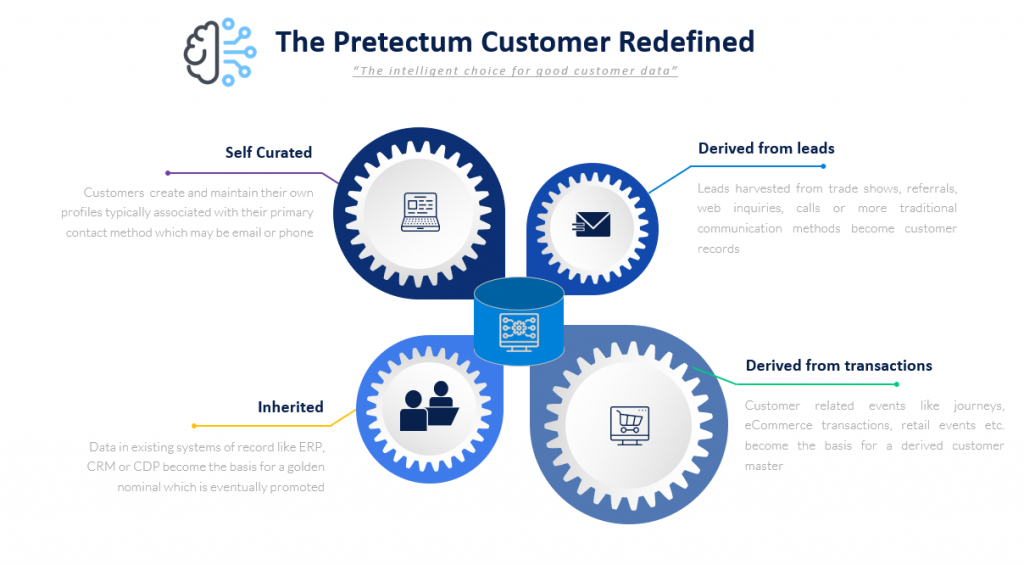Google the concept of customer 360 and you will get a lot of different kinds of answers, most of them will focus on having a perfected view of what the customer looks like and a lot of the focus is on merging the many digital identities that a customer has.
The reality though, is that no additional transactional, social or other data pertaining to the customer helps you to get closer to the customer if you don’t have a clear understanding of what a customer really is and all the essential attributes that form the meaningful shape of the customer for your business.
The clarity of the definition of the customer is further compromised when you consider that the many operational silos of a business have different expectations and requirements around customer data itself.
Then, finally, there is the matter of systems of record. Whether it be ERP, CRM or a CDP, if those systems are defining the attributes that matter as it relates to the concept of ‘customer’; are they elaborate and comprehensive enough to actually adequately address the diverse needs of the business?
While it can be easily understood that an isolated system for mastering the customer is not of much value, a customer master that supports connectivity to various sources and targets can operate as a data syndication hub that cannot only ingest but also distribute customer master data in a way that regulates and manages customer data.
An important aspect of considering customer master data management has to be the consideration of where you can realistically intercept and control customer data as it is created, edited and used.
B2B vs B2C Customers
For many organizations, the process of onboarding B2B customers starts with a contact or a lead.
This may contain very limited information about the customer or prospect and is typically all wrapped up in the role of the individual and the way that lead was sourced. Imagine a situation then, where every lead itself starts out classified as the primary customer but then, as your relationship with the individual develops, their record morphs into a customer record. This is one way that customers get created.
A second approach to B2B customer creation is very process and system-oriented and in some respects incompatible with the way data is harvested in the real world. This approach requires you to create a customer master ‘shell’ to attach a lead to. This is a common approach and one that carries much more rigor and potential process design flaws if you want to arrive at a quality customer record. Using this ‘shell’ approach often leads to incompatibility in terms of data creation timelines and a great deal of friction in the customer onboarding process. Additionally, adding customers directly in ERP, CRM or the CDP without gating criteria may lead to a great deal of duplication and partial record creation that will need to be addressed at some point.

The B2C customer is different again, sometimes the curation of the customer record is by the customer themselves, on other occasions the customer record is acquired or inferred from an eCommerce or retail transaction or a sign up to some other system like loyalty, a donation, a service record or a cold-call or inquiry.
Imagine, a system that can support both B2B and B2C customer master data management scenarios but one where the B2B customer is derived from one or more customer records that start out as leads and are then relegated to contact status by virtue of your nomination of data attributes that constitute the best possible B2B customer record. This derivation approach can also be applied to B2C customers but leveraging a great many aspects of what your organization deems critical customer data.
The Pretectum CMDM will support your organization in tackling all of these different kinds of ways of thinking about customer data curation. If you’d like to learn more, why not reach out to us and find out more?


